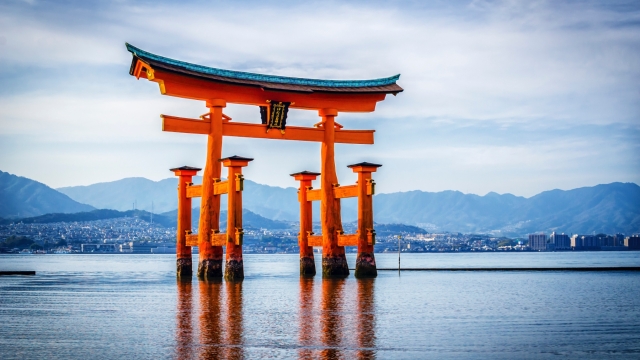
Stepping into Japan is like entering a world where tradition and nature intertwine seamlessly. Among the many treasures that grace this beautiful archipelago, the Shinto shrines stand out as sacred spaces that whisper the stories of ancient beliefs and practices. Each shrine, with its own unique character, invites visitors to explore a realm where spirituality, culture, and nature create a tranquil experience. From the vibrant vermilion torii gates to the serene gardens that surround the hallowed grounds, these shrines offer glimpses into the heart of Shinto, the indigenous spirituality of Japan.
As you wander through the lush landscapes dotted with these enchanting structures, you cannot help but feel a connection to the past. The sense of peace found in the gentle rustle of the leaves and the soft sounds of water flowing from nearby streams fosters a deep appreciation for the spiritual significance of these sites. With thousands of Shinto shrines scattered across the country, each location presents a unique blend of history, artistry, and natural beauty, beckoning travelers to discover the profound heritage that has shaped Japan for centuries.
History of Shinto Shrines
The origins of Shinto shrines in Japan can be traced back to ancient times when people began to worship natural elements such as mountains, rivers, and trees. These early forms of spirituality did not have a structured organization or a sacred text, but they were deeply rooted in the belief that kami, or spirits, inhabited the natural world. Over time, these practices evolved into more formalized worship as communities began to construct simple structures to honor the kami. These early shrines were often made of natural materials and were designed to blend harmoniously with their surroundings.
By the 6th century, Buddhism was introduced to Japan, and it began to influence the development of Shinto. The interaction between these two religions led to the elaboration of shrine architecture and rituals. As Shinto started to formalize its practices, many shrines were built to serve as focal points for community gatherings and religious ceremonies. During this period, various local deities were enshrined, and the concept of kami became more nuanced, encompassing not only natural elements but also ancestral spirits and divine figures.
The Heian Period, which spanned from the 8th to the 12th century, marked a significant expansion of Shinto shrines. This era saw the establishment of prominent shrines such as Ise Jingu, dedicated to the sun goddess Amaterasu, and Fushimi Inari Taisha, known for its thousands of vermilion torii gates. The aesthetic and architectural styles of shrines became increasingly refined, leading to a distinct Japanese identity that celebrated the relationship between the people and the kami. This period laid the groundwork for the vibrant Shinto tradition that continues to thrive in Japan today.
Architectural Features
Shinto shrines in Japan showcase a unique architectural style that is deeply rooted in the culture and spiritual beliefs of the country. The use of natural materials, particularly wood, creates a harmonious connection with the surrounding environment. The structures often feature thatched roofs, which not only serve a practical purpose of keeping out rain and snow but also symbolize a bond with nature. The simplicity and elegance of these designs reflect the Shinto belief in purity and the importance of the natural world.
One defining characteristic of Shinto shrines is the torii gate, an iconic symbol that marks the entrance to sacred space. This gateway serves as a transition between the mundane and the spiritual, inviting visitors to leave their everyday worries behind. Each torii is uniquely crafted, often painted bright vermillion or left in its natural wood state, depending on the region and specific shrine traditions. The presence of the torii sets the tone for the journey into the shrine, emphasizing the sacred nature of the site.
Another key aspect of shrine architecture is the layout and orientation of the buildings. Many shrines are designed to align with the cardinal directions, enhancing their connection to the cosmos. The main hall, or honden, is typically elevated and carefully positioned to face the entrance, allowing practitioners to approach in a respectful manner. Additionally, the use of open spaces and well-maintained landscaping invites contemplative reflection, creating an enchanting ambiance that embodies the serenity of Shinto spirituality.
神社 有名
Cultural Significance
Shinto shrines in Japan are not merely places of worship; they embody the spiritual and cultural identity of the Japanese people. These sacred spaces serve as a connection between the physical world and the kami, or spirits, that are central to Shinto beliefs. Each shrine is dedicated to a specific kami, representing various aspects of nature, ancestors, or important events, and this personal connection fosters a sense of community and continuity with the past.
The architecture and design of shinto shrines reflect traditional Japanese aesthetics, incorporating natural elements that harmonize with the surrounding environment. Many shrines are built using materials like wood and stone, allowing them to blend seamlessly into the landscape. This deep respect for nature highlights the Shinto belief in the sacredness of all living things, emphasizing harmony between humans and the natural world, which is a fundamental tenet of Japanese culture.
Festivals and rituals held at shinto shrines play a vital role in the lives of communities across Japan. These events often include traditional music, dance, and offerings, bringing together people to celebrate seasonal changes, harvests, or significant life events such as weddings or coming-of-age ceremonies. Through these communal activities, shinto shrines foster a sense of belonging and shared cultural heritage, ensuring that ancient traditions continue to thrive in modern society.
Visiting Iconic Shrines
Japan is home to numerous iconic Shinto shrines, each offering a unique glimpse into the country’s rich spiritual heritage. One of the most famous is the Fushimi Inari Taisha in Kyoto, renowned for its thousands of vibrant red torii gates that wind through the sacred Mount Inari. This shrine is dedicated to Inari, the deity of rice and agriculture, and the walk through the gates, which can take hours, is both a spiritual journey and a visual feast for visitors.
Another notable shrine is the Meiji Shrine in Tokyo, which honors Emperor Meiji and Empress Shoken. Nestled within a tranquil forest, the shrine offers a serene escape from the bustling city. Visitors can participate in traditional Shinto rituals, like writing wishes on small wooden plaques and tossing coins into the offering box, making this shrine a popular spot for both tourists and locals seeking blessings and spiritual insight.
The Ise Grand Shrine, located in Mie Prefecture, is revered as the holiest site in Shinto. It is dedicated to the sun goddess Amaterasu and is a symbol of Japan’s national identity. The current buildings are a reconstruction that occurs every 20 years, showcasing the principles of renewal and impermanence that are central to Shinto beliefs. The vast grounds invite visitors to explore intricate gardens, sacred trees, and traditional pathways, offering a profound experience of Japan’s ancient traditions.

